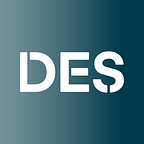Essentials for workplace well-being: Work-life harmony
In 2022, the U.S. Surgeon General issued the Framework for Workplace Mental Health and Well-being in response to impacts of the pandemic. “The COVID-19 pandemic has changed the nature of work, and the relationship many workers have with their jobs,” the framework notes. “The link between our work and our health has become even more evident.”
The framework describes five essentials and their components for reimagining workplaces:
In previous articles in this five-part series, we took a look at protection from harm and connection and community. In this article, we focus on Work-Life Harmony.
Human beings need autonomy and flexibility. We need the ability to integrate the often-competing demands of our work- and non-work lives. We experience increased well-being when our employers see us not just as roles and job duties, but as whole people.
The components of Work-Life Harmony are:
- Provide more autonomy over how work is done.
- Make schedules as flexible and predictable as possible.
- Increase access to paid leave.
- Respect boundaries between work and non-work time.
Here are some ways you can promote autonomy and flexibility in the workplace.
Provide more autonomy over how work is done.
- Provide opportunities for employees to attend training on problem-solving, decision-making, and collaboration. A 2021 article from the Harvard Business Review notes that “organizations that invest in skills development — not as an extrinsic reward but as an enabler of autonomy — will improve their employees’ ability to work autonomously.”
- Develop team psychological safety. Team members who feel safe to take risks, are empowered to ask questions and share concerns and can make mistakes without fear of punishment. They are then more willing to take ownership and be accountable.
- Engage your teams in a SWOT analysis. Identifying and understanding the strengths, weaknesses, opportunities and threats can help you and your teams put strategies in place for successful outcomes.
- Tolerate, trust and try. You’ve identified the risks and put strategies in place to address the risks. You’ve developed a trained and skilled team and promoted a culture of psychological safety. It’s now time to tolerate the risk, trust your team and your decisions, and give autonomy a try.
Make schedules as flexible and predictable as possible.
- Consider a change management approach to developing and sustaining remote, hybrid and flexible schedules.
- Give employees as much notice as possible about their schedules. Strive for consistency over time. One 2021 research study suggested predictable schedules had a positive impact on employee well-being.
Increase access to paid leave.
- Promote awareness of paid leave options. Many employees do not know or fully understand the options available to them, including a relatively new benefit — Washington Paid Family and Medical Leave.
- Promote a workplace culture that values mental and physical health and overall well-being. Employees might be reluctant to take time off, even when necessary, if they don’t trust that being off work won’t result in negative consequences.
Respect boundaries between work and non-work time.
- Limit your communications to your employees outside of work hours. The expectation that they stay connected to work and respond to messages can cause them physical and mental health distress.
- Use technology. Most business-oriented email programs allow you to schedule email delivery for specific dates and times.
- Model healthy behaviors. As the leader, what you say and do has impact on workplace culture and the behaviors of your team members. They will follow your lead.
Request an EAP organizational consult.
The EAP provides consultations to supervisors, managers, and leaders on issues like employee performance, workplace conflict and employee mental health and well-being. The EAP can also consult on resources and strategies to help you and your employees manage competing demands. Visit the EAP website to request an organizational consultation.
Subscribe to the EAP supervisor newsletter to get articles and updates by email.
The Washington State Employee Assistance Program (EAP) is a free, confidential program created to promote the health, safety and well-being of public service employees and their household adult family members. The EAP is available to provide confidential and expert consultation in a variety of areas. Reach out to EAP online or by calling 877–313–4455. To find out if the Washington State EAP serves your agency or organization, contact your supervisor or human resources department.
Links to external websites are provided as a convenience. The Employee Assistance Program and the Department of Enterprise Services do not endorse the content, services, or viewpoints found at these external sites. Information is for general informational purposes only and is not intended to replace the counsel or advice of a qualified health or legal professional. For further help, questions, or referral to community resources for specific problems or personal concerns, contact the EAP or other qualified professional.
